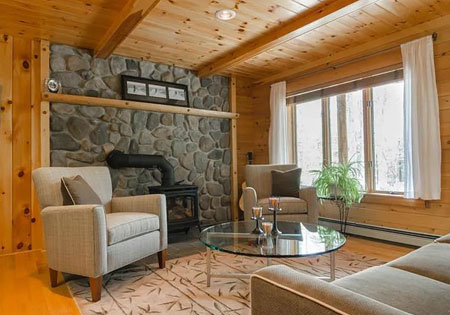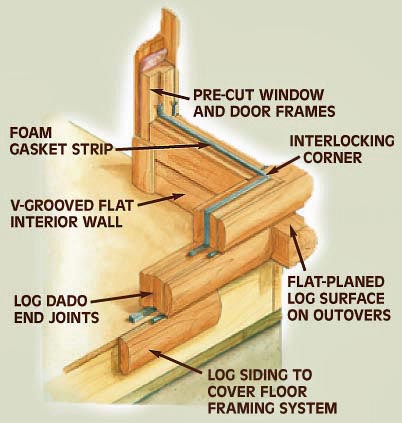Energy Efficiency - Part I
Posted by Ward Cedar Log Homes in Featured Home Design/Square Footage Log Homes Efficiency
Three Tips for Creating a Comfortable, Energy-Efficient Log Home
In recent years, conscious consumerism has been gaining traction — and for valid reasons. Engaging with our world’s resources thoughtfully just makes good common sense. Thankfully, you’re already ahead of the game. By choosing a log home, you’ve opted for a renewable, sustainable building material. (And, by selecting Ward Cedar Log Homes as your log package provider, you’re continuing your wise consumerism. Our manufacturing facilities make a point of minimizing waste and boosting efficiency.)
While you are doing our collective natural resources a favor, this isn’t only an altruistic endeavor. When you choose a log cabin, you’ll have a notable, long-term impact on your energy usage, directly benefitting your bottom line over the long run. And annual utilities savings won’t be the only benefit. Because every Ward home boasts superior efficiency, you’re guaranteed a home that is comfortable, year-round.
Read on to learn more about how Ward log homes are winning at energy efficiency and discover tips for taking your energy efficiency up a notch.
- Monitor Your Materials. The ability of your home to be energy-efficient is only as strong as the materials it is built with. In a typical stick-frame house, there may be insulation included in the walls, but every 2-by-6 stud creates a thermal break. As a result, the structure is vulnerable to cold and hot air intrusion, as well as loss of heated or cooled air. In a log home, the wall materials (logs) are continuous, with no thermal breaks. Additionally, Ward's northern white cedar logs and timbers are known for their thermal mass, which means they readily absorb heat and release it over time, thereby helping to regulate the interior temperatures of your home.
- Tighten Up. It’s no secret that there are a lot of log home companies to choose from. But while we may all do the same thing — build homes — we don’t do it the same way. And, in this case, the devil is in the details. Our logs aren’t simply stacked one on top of the other with some caulking to seal things off. We create a superior, air-tight building shell, and it all starts before the logs ever reach your building site. Our secret sauce is a dado cut (also called a tongue and groove) on the log ends that allows two side-by-side logs to overlap, ensuring a tight shell.

In addition to this special fitting, we add a foam seal strip between the logs and backer rod, sealing it all off with Perma-Chink Energy Seal caulking on the exterior of the log. (It’s in the name: One application makes our log walls completely weathertight.) Next, we include ENERGY STAR® v. 6.0 certified Andersen 400-Series windows in our log home packages. Lastly, because roofing systems can be a top source of energy loss, many of our customers choose spray foam insulation to further ensure their Ward cedar log home will hold heat in the winter and cool air in the summer. - Think Through Orientation. To double down on your log cabin’s efficiency, pay careful attention to how you site your home during the design phase. You’ll want to consider the geographic area in which you are building, as well as your unique lot, to determine your home’s orientation. (An architect or your general contractor can be of help here, as they will have boots-on-the-ground knowledge of your specific site.) Things like orientation, window size and placement, and depth of overhangs will all factor into how well your home aligns with a passive solar design, which can reduce energy requirements by up to 20 percent. We can customize each of these features in your log home.
Ready to read more about how to create a comfortable, energy-efficient log home? Stay tuned for part two, in which we show you how your home’s heating and cooling systems, appliances, and lighting all factor into the conversation.
Get a Free Price Quote to begin your log home journey.
Be sure to follow us on Facebook, Pinterest, and Instagram for inspiration, events, tips and more!


Post Your Comment